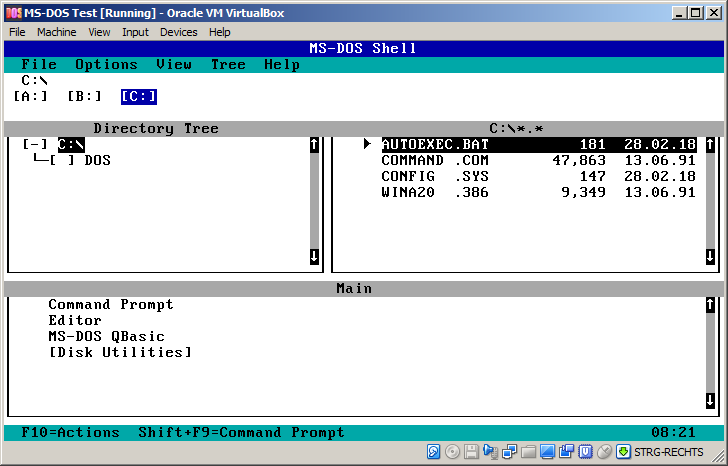

Name the new VM ‘FreeDOS’, and you should see that VirtualBox will automatically alter the OS and version to ‘Other’ and ‘DOS’. Installing FreeDOSįirst, click on ‘New’ within VirtualBox, and follow the setup wizard.

Now that you have all the ingredients, let’s quickly run through the installation via VirtualBox – if you’re not using VirtualBox then you can skip this bit.
#Virtualbox ms dos iso iso
iso is only roughly 40MB, so it shouldn’t take too long to download (obviously, depending on the speed of your connection). Once you have VirtualBox up and running, navigate over to the FreeDOS site and get hold of the latest base version, which at the time of writing is version 1.1 (bit.ly/KfsVdG).
#Virtualbox ms dos iso install
Locate the version specific to you, then download and install it. Oracle’s VirtualBox can be found at bit.ly/Lj4qvB. It will allow most modern but mainly older PCs to run an equivalent open-source version of the old-style MS-DOS.Īnyway, your first port of call to have a play with FreeDOS will be VirtualBox, or some other virtual machine application, unless of course you plan to run FreeDOS on an individual machine. FreeDOS is a project that’s been around for quite some time now, launched with version 1.0 in 2006. However, we do have an alternative we can use: FreeDOS. Unfortunately, Microsoft hasn’t quite got around to making DOS 6.22 available as freeware, which is a bit of a shame really. That being case, we thought an article on installing DOS inside something like VirtualBox would be a bit of fun, and allow us to have a nostalgic stroll down memory lane by playing around with some of the old DOS-based games and applications we used to love so much. It allows you to export a Virtualbox Disk Image (VDI) to a raw image that can be written to a USB disk.DOS was pretty cool, and although it might be lost in the sands of time, it’s certainly not buried beyond all thought. The secret sauce is the VBoxManage command.



 0 kommentar(er)
0 kommentar(er)
